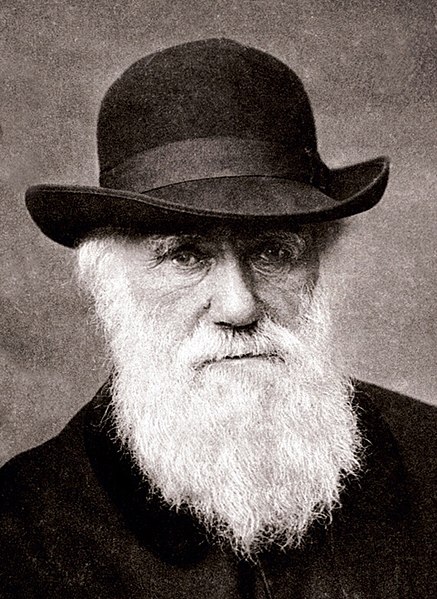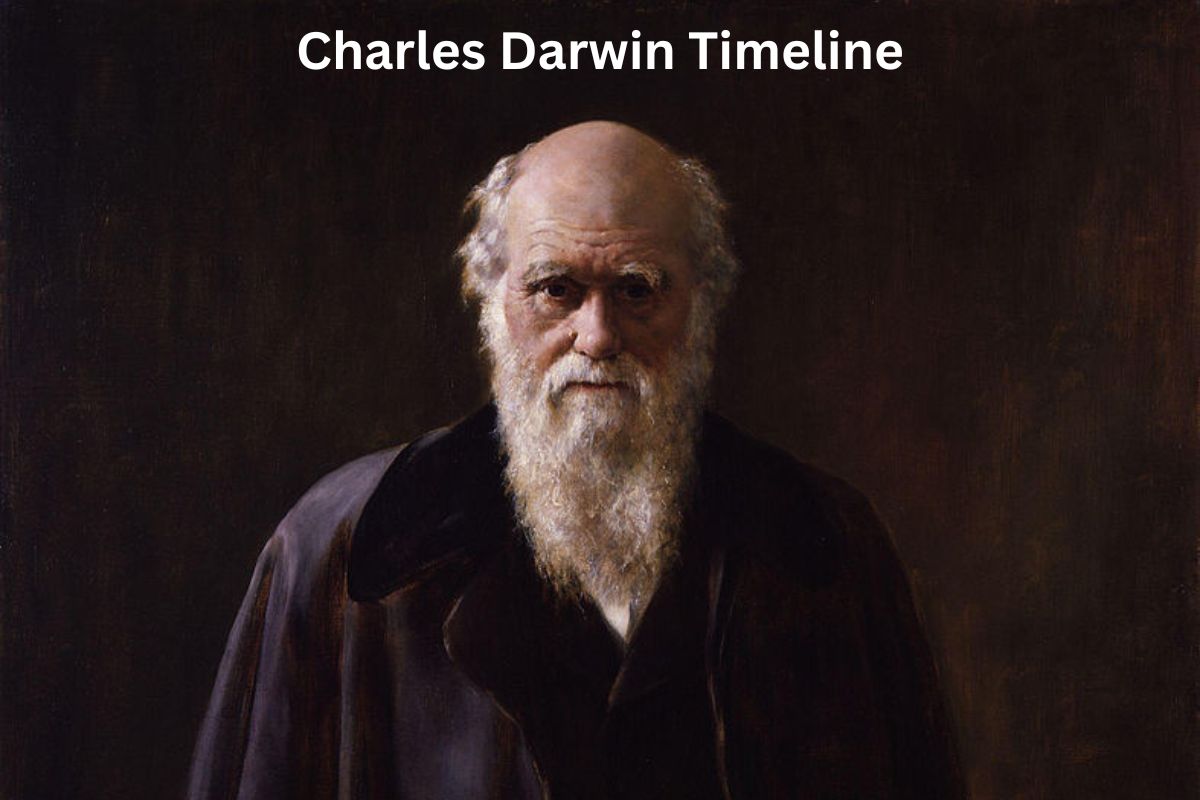Charles Darwin (1809-1882) was a renowned British naturalist and biologist who is best known for his groundbreaking theory of evolution by natural selection.
Born on February 12, 1809, in Shrewsbury, England, Darwin embarked on a transformative voyage aboard the HMS Beagle from 1831 to 1836.
This expedition provided him with valuable observations and specimens that formed the basis of his scientific work. In 1859, he published his seminal book, “On the Origin of Species,” which presented his theory of evolution and revolutionized the field of biology.
Darwin’s ideas challenged prevailing religious and social beliefs of the time and sparked intense debates that continue to this day. His contributions to science, including his exploration of human evolution, made him one of the most influential figures in the history of biology.
Charles Darwin’s work continues to shape our understanding of the natural world and the diversity of life on Earth.
Timeline of Charles Darwin
1809 – Born on February 12 in Shrewsbury, England
Born on February 12 in Shrewsbury, England. Charles Robert Darwin was born into a well-to-do family.
His father, Robert Darwin, was a successful physician, and his mother, Susannah Darwin, came from a prominent Wedgwood family known for their pottery. Darwin was the fifth of six children.

1825 – Enrolled at the University of Edinburgh
At the age of 16, Darwin began his higher education at the University of Edinburgh. Initially, he intended to study medicine, following in his father’s footsteps.
Also Read: Charles Darwin Accomplishments
However, he found the medical curriculum uninteresting and focused more on pursuing his passion for natural history.
During his time at Edinburgh, he joined the Plinian Society, a natural history group, and attended lectures by influential scientists of the time.
1828 – Transferred to Christ’s College, Cambridge
Darwin’s father, concerned about his lack of academic progress in Edinburgh, urged him to pursue a more respectable profession. As a result, Darwin transferred to Christ’s College, Cambridge, to study theology with the aim of becoming an Anglican clergyman.
Also Read: Charles Darwin Facts
However, he also continued his pursuit of natural science. At Cambridge, he developed a close friendship with John Stevens Henslow, a professor of botany, who had a profound influence on his scientific development.
1831-1836 – Embarked on a five-year voyage on HMS Beagle
Darwin’s most famous and transformative experience came when he was invited to join the HMS Beagle as a naturalist on a surveying expedition around the world. The voyage, initially planned to last for two years, ended up lasting five years due to various circumstances.
During this time, Darwin traveled to places such as South America, the Galápagos Islands, Australia, and the Cape Verde Islands. He meticulously collected specimens and made detailed observations of the geological formations, flora, and fauna he encountered.
This expedition provided him with invaluable data and insights that would later shape his ideas on evolution and natural selection.
1837 – Began correspondence with prominent scientists
Began correspondence with prominent scientists. After returning from his voyage on the HMS Beagle, Darwin settled in London and started corresponding with several prominent scientists of his time.
Notably, he exchanged letters with Joseph Dalton Hooker, a botanist, and Charles Lyell, a geologist. These correspondences allowed Darwin to share his findings, discuss his ideas, and seek feedback from experts in various scientific fields.
These interactions played a crucial role in shaping his thinking and refining his theories on evolution.
1839 – Married his cousin, Emma Wedgwood
On January 29, 1839, Darwin married his first cousin, Emma Wedgwood. Emma was a devout Christian and a supportive companion throughout Darwin’s scientific journey.
Despite their differing views on religious matters, their marriage was a loving and enduring partnership that lasted until Darwin’s death. The couple had ten children together, seven of whom survived to adulthood.
1856 – Began writing “On the Origin of Species”
Following his return from the Beagle voyage, Darwin spent many years refining his thoughts, conducting further research, and accumulating evidence to support his theory of evolution.
In 1856, he started working on a manuscript that would become his most famous and influential book, “On the Origin of Species.”
This groundbreaking work aimed to present his theory of evolution by natural selection, providing a comprehensive explanation for the diversity of species and their adaptation to the environment.
1859 – Published “On the Origin of Species” on November 24
After years of meticulous research and careful consideration, Darwin’s revolutionary book, “On the Origin of Species,” was published on November 24, 1859.
The publication of this work marked a turning point in the understanding of biology and had far-reaching implications for scientific, religious, and societal debates.
In the book, Darwin presented evidence for the concept of natural selection and proposed that species evolve over time through a process of gradual change, challenging prevailing beliefs about the origins of life.
The book garnered significant attention, sparked intense debates, and ultimately revolutionized the field of biology.
1871 – Published “The Descent of Man, and Selection in Relation to Sex”
In 1871, Darwin published “The Descent of Man, and Selection in Relation to Sex,” which expanded on his theory of evolution by natural selection and applied it to human evolution.
In this book, Darwin explored the similarities between humans and other animals, discussing topics such as sexual selection, the evolution of emotions, and the origin of moral and intellectual faculties.
“The Descent of Man” generated considerable controversy due to its implications for human origins and challenged prevailing religious and social views of the time.
1882 – Elected a member of the Royal Society
Charles Darwin’s contributions to science were widely recognized and respected during his lifetime. In 1882, he was elected as a Fellow of the Royal Society, a prestigious scientific organization in the United Kingdom.
This honor reflected the significant impact of his work and his stature within the scientific community. Darwin’s membership in the Royal Society further solidified his reputation as one of the most influential scientists of his era.
1882 – Died on April 19 at the age of 73
Charles Darwin passed away on April 19, 1882, at his home, Down House, in Downe, England. Throughout his later years, Darwin battled various health issues, including heart problems and chronic illnesses.
Despite his declining health, he continued to correspond with scientists, write, and contribute to scientific discussions. Darwin’s death marked the end of an era for evolutionary biology, but his legacy and ideas continued to have a profound impact on subsequent generations of scientists and thinkers.
